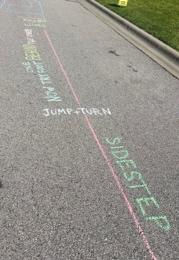Dynamic Learning
- All Care Therapies

- May 8, 2018
- 2 min read

Have you ever sat down on a very uncomfortable chair? Whether it was at a nail salon, your physicians waiting room, or a restaurant? I’m sure we have all had situations where we were so distracted by how uncomfortable we were that we did not enjoy our visit at the doctor’s office or our dinner at our favorite restaurant.
Picture yourself in a classroom setting, sitting down for 7-8 hours of the day feeling extremely uncomfortable “trying” to learn new material. It is very difficult when a child or young adult is in this situation without being able to make a change for their learning abilities. Majority of teachers see a classroom setting as a place to sit down, stay still and learn. Sometimes even being punished for not being seated appropriately. If you think about it, how can someone possibly focus on learning when their sitting uncomfortably on a cheek pinching, hair pulling machine. Truthfully, not all schools have the ability of having great comfy chairs.
Studies have shown that a child’s attention can improve by providing a different sitting surface. Sitting on a dynamic surface enhances the attention span and improves learning abilities to children who have attention deficits and children who do not have specific deficits.
The following dynamic surfaces are some ideas in which can help a child increase attention:
Therapy Ball
Wedge
Balance Cushion
Standing Balance Disks
Not only does the dynamic surfaces enhance the attention span of a child or young adult; but it also can do double the work to provide a positive reinforcement to improve their trunk strength and control. Kids usually slouch down in chairs or lay their head down. Sitting on a type of dynamic surface will refrain these behaviors from happening for a more proper sitting posture so the children can focus and attain more information to further their education.
References:
Why balls replace chairs in some Dallas classrooms. (2018, March 15). Retrieved from https://www.wfaa.com/article/news/local/education/why-balls-replace-chairs-in-some-dallas-classrooms/287-528672349
SADR, N. M., HAGHGOO, H. A., SAMADI, S. A., RASSAFIANI, M., BAKHSHI, E., & HASSANABADI, H. (2017). Retrieved from https://www.ncbi.nlm.nih.gov/pmc/articles/PMC5329757/




Comments